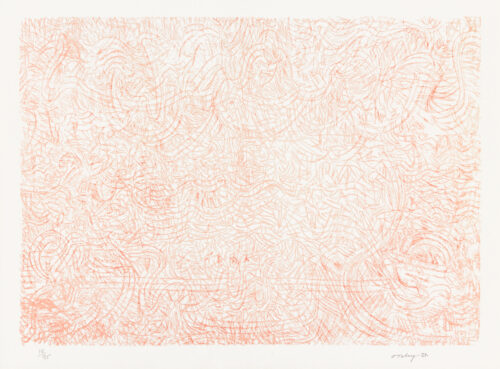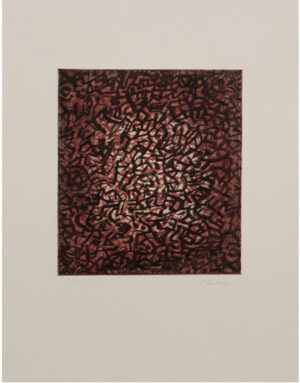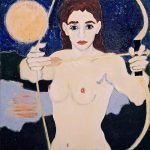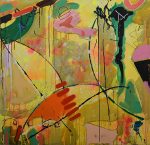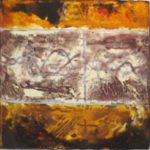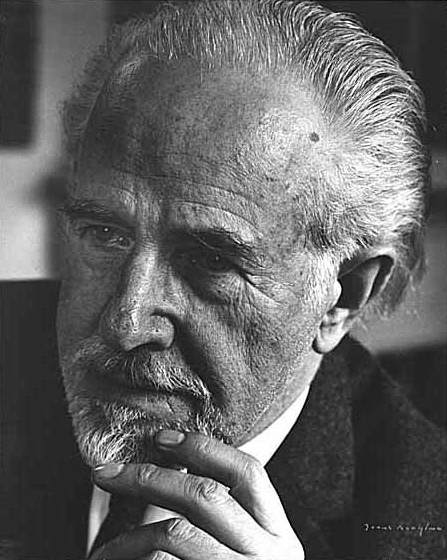
Mark Tobey was an American, painter whose dense, calligraphic paintings in the “all over” style—later championed by Jackson Pollock—secured his reputation as a pioneer of Abstract Expressionism. He was born on December 11, 1890 in Centerville, WI and studied at the Art Institute of Chicago from 1906 to 1908. Tobey moved to Seattle in 1922 and joined the faculty at the Cornish School of the Arts. He befriended Teng Baiye, who taught him Chinese calligraphy, and began his long relationship with the Seattle Art Museum and its director, Richard Fuller. In 1931, Tobey began teaching at the experimental school Dartington Hall, in Devon, England. Between terms, he traveled abroad, visiting Baha’i shrines in Haifa, a Japanese Zen monastery in Kyoto, and his friend Teng Baiye in Shanghai. Throughout his travels, he dedicated himself to studying Arabic calligraphy, Chinese brushwork, and Zen painting, calligraphy, and poetry. Tobey first employed the technique of calligraphic-style white line painting in 1935. He surprised himself, he wrote to the Callahans at the time, having created “a feeling of Hell under a lacy design—delicate as a Watteau in spirit but madness.” Tobey returned to Seattle in early 1939 and began working with the local office of the Works Progress Administration’s Federal Art Project, the time when Tobey became known as a member of the Northwest School.
Working in practice that was more contemplative than most of his peers, he once observed, “I believe that painting should come through the avenues of meditation rather than the canals of action.” His abstractions were never without references to humanity, to Baha’i teachings, and to nature; the painting titles reveal that they could be, variously, visualizations of the world in flux, of the human spirit transcendent, or of the cosmos. And always, Tobey claimed, they were meant to convey “the stepped-up rhythms of America.” In 1951, the artist had a solo exhibition at the Whitney Museum in New York, with the show then travelling on to San Francisco, Seattle, and Santa Barbara, securing Tobey’s international renowned style. Tobey has also been the subject of retrospectives at the Smithsonian Museum and the National Gallery of Art in Washington, D.C., the Museum Folkwang in Essen, and the Foundation Beyeler in Basel. He died on April 24, 1976 in Basel, Switzerland.



